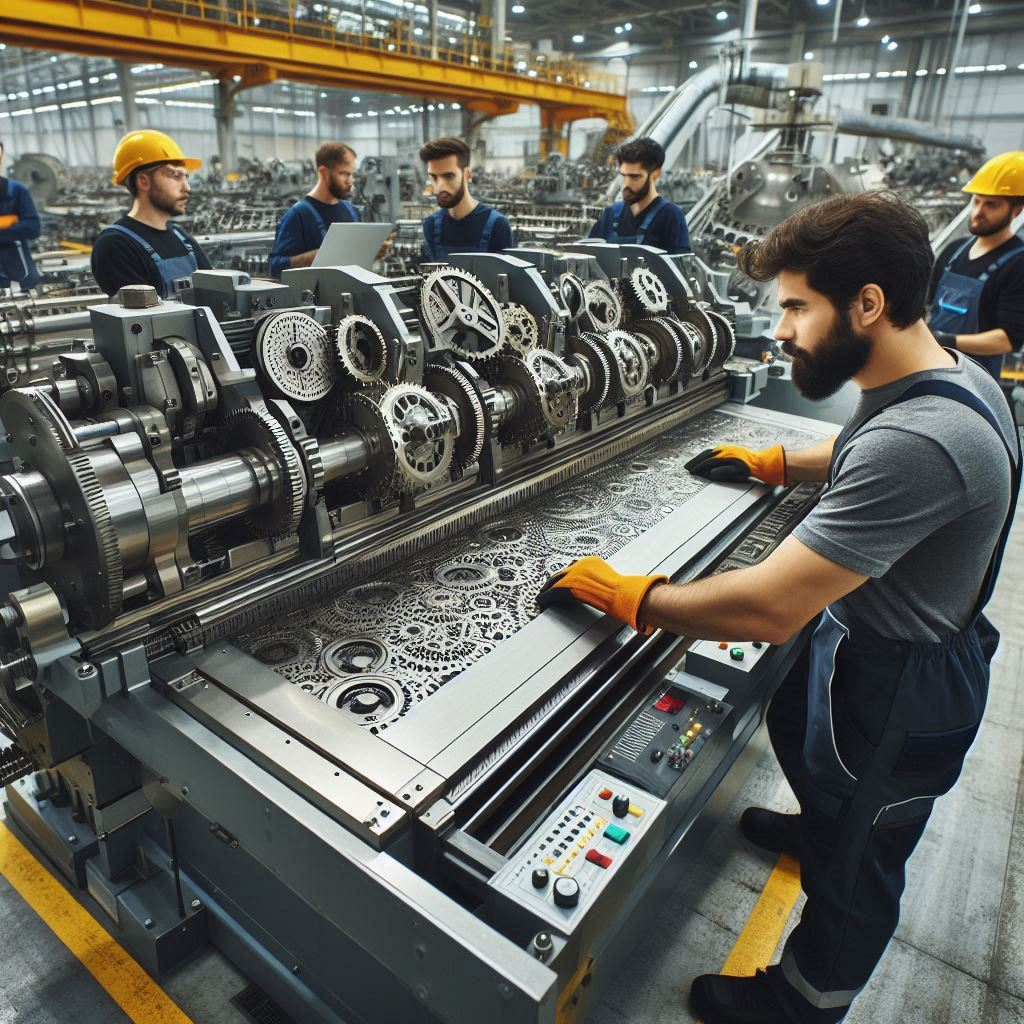Plate bending machines are typically utilized within industries that require precise bending or forming of metal plates into cylindrical, conical, or warped shapes (think, roundness, tapered or tangent joints, etc.). These machines are an important component in the manufacture of pressure vessels, storage tanks, boilers, and pipelines where uniform curvature and structural integrity are critical for end use. Plate bending machines are also utilized in the shipbuilding/marine industry to bend hull plates, structural sections and other fabrication when curved portions of metal plates are required. Industries like automotive, aerospace, and construction increasingly use plate bending machines to bend frames, panels, and structural supports. Plate bending machines are used to make massive curved plates with accurate repeatability in wind tower, heavy equipment, and steel fabrication shops. Modern plate bending machines have advanced techniques of CNC and hydraulic controls has opened the door to accurate, efficient, and repeatable metal forming.
How can we increase efficiency of Plate bending machines
Plate bending machine performance can be enhanced through some technology enhancements, proper maintenance and comprehensive operator training. Using CNC or PLC control systems enhances the bending process by being more precise and automated, thus removing some manual error and also taking out some of the time prior to bending. Better hydraulic systems and better lubricated mechanical systems will help keep the motion from stalling or being erratic. By regularly calibrating the rolls, and keeping the plates properly aligned will assist in keep proper bending and reducing wasted material. Utilizing advanced material components for the rolls would greatly add to durability, and uptime in relation to wear. Additionally, focusing on training for the operator to use engage the control, and having a preventative maintenance schedule in place will help to continually improve productivity and assist in prolonging the machine life, along with reliable high-speed bending.
Maintenance tips for Plate bending machines
To achieve long-lasting accuracy, performance, and safety from plate bending machines, consistent and proper maintenance is required. Operators are to routinely check for wear or damage to rolls and bearings. Operators are to make certain that sufficient lubrication is provided to all moving parts of the machine, which aids in reduced friction. Check the hydraulic system for leaks, resistance to hydraulic pressure, and for the condition of oil, and replace, if indicated, as per the manufacturer’s recommendation. Operators are to keep electrical and control components dry and clean, aiding in the maximum uptime and operational reliability of the equipment.
It is also a good practice to calibrate the plate bending machine on a routine basis (some companies will specify this); along with the checking of roll alignment before every bend. Maintaining a clean workplace and tightening bolts or fittings helps to avoid potential mechanical problems, therefore lasting the life cycle of the plate bending machine.
Conclusion
To sum it up, Plate bending machine manufacturer manufactures plate bending machines that are important equipment for modern metal fabrication, creating metal plate configurations for many purposes in modern industry more accurately and efficiently. Because of their capabilities , they play a critical role in construction, shipbuilding, energy and manufacturing applications. Ultimately, focus must be placed on maximizing efficiency through automation, preventative maintenance and skilled operation, to achieve the best performance. Provided to receive proper care, timely updates, and regularly maintained for best practices, plate bending machines will become dependable instruments offering optimal accuracy, minimal downtime, and increased production capacity. A dependable, and efficient plate bending machine will only increase the overall productivity and competitiveness of your manufacturing operation.



